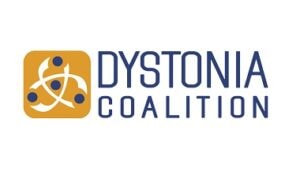DMRF Co-Funds Dystonia Coalition Pilot Project Awards
 The DMRF is proud to partially support two Dystonia Coalition Pilot Project Awards. The goal of the Pilot Projects Program is to foster the most promising clinical and translational studies on dystonia.
The DMRF is proud to partially support two Dystonia Coalition Pilot Project Awards. The goal of the Pilot Projects Program is to foster the most promising clinical and translational studies on dystonia.
Moodscreen for Cervical Dystonia: A Diagnostic Accuracy Study of Depression and Anxiety
Davide Martino, MD, PhD, University of Calgary
Depression and anxiety frequently negatively impact how individuals with dystonia feel and function—and often cause more disability than involuntary movements and postures. This is especially the case in cervical dystonia (CD) and additional forms of adult-onset, isolated idiopathic dystonia. There is a need to update the model of care for dystonia patients to detect and treat disabling non-motor symptoms.
Selecting the most accurate, feasible, and cost-effective screening system for depression and anxiety will be essential to this care model upgrade and is the core intention of this project.
The primary aim is to assess different clinical rating instruments for depression and anxiety in patients with cervical dystonia compared to a gold standard assessment. The second aim is to measure whether these instruments are universally useful across age, educational level, body spread of dystonia, and ongoing therapies.
This will be a be cross-sectional, multi-center observational study to collect general demographic and clinical data and perform psychiatric assessments.
The Effect of Multi-Day Continuous Theta-Burst Stimulation on Symptoms of Cervical Dystonia
Daniel Corp, PhD, Deakin University
Non-invasive brain stimulation techniques, such as theta-burst stimulation (TBS), hold potential as a safe and effective treatment for dystonia, especially for less severe cases where deep brain stimulation surgery may not be recommended. Dr. Corp previously localized a brain network showing specific abnormality in cervical dystonia, with the key nodes located in the somatosensory cortex and the cerebellum.
The primary aim of this project is to employ a randomized controlled trial to investigate whether stimulation of this location can improve symptoms of cervical dystonia. A secondary aim is to test whether stimulation results in changes in brain structure or physiology and whether these changes are associated with symptom improvement.
See a recent update on the Dystonia Coalition from Principal Investigator H. A. ‘Buz’ Jinnah, MD, PhD below.
[media_video unique_id=”c31d2ebb8c2fbd7fcb4e8b72d1180df1″ shortcode_name=”Dystonia Coalition 2022″ video_type_picker=”video” video=”https://youtu.be/rI0Vm2boWuo” vimeo=”” upload=”” width=”” frame=”{‹²›selected‹²›:‹²›no‹²›,‹²›yes‹²›:{‹²›border_size‹²›:‹²›1‹²›,‹²›border_color‹²›:{‹²›color‹²›:‹²›‹²›,‹²›id‹²›:‹²›fw-custom‹²›}}}” animation_group=”{‹²›selected‹²›:‹²›no‹²›,‹²›yes‹²›:{‹²›animation‹²›:{‹²›animation‹²›:‹²›fadeInUp‹²›,‹²›delay‹²›:‹²›200‹²›}}}” responsive=”{‹²›desktop_display‹²›:{‹²›selected‹²›:‹²›yes‹²›},‹²›tablet_landscape_display‹²›:{‹²›selected‹²›:‹²›yes‹²›},‹²›tablet_display‹²›:{‹²›selected‹²›:‹²›yes‹²›},‹²›smartphone_display‹²›:{‹²›selected‹²›:‹²›yes‹²›}}” class=”” __fw_editor_shortcodes_id=”45ada40b698ed96ee1a1b14e65f01745″ _array_keys=”{‹²›frame‹²›:‹²›frame‹²›,‹²›animation_group‹²›:‹²›animation_group‹²›,‹²›responsive‹²›:‹²›responsive‹²›}” _fw_coder=”aggressive”][/media_video]
The Dystonia Medical Research Foundation is a 501(c)(3) non-profit organization dedicated to advancing research for improved dystonia treatments and ultimately a cure, promoting awareness, and supporting the well-being of affected individuals and families.



